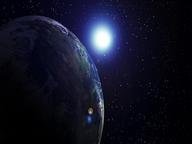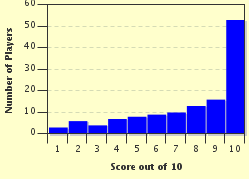Quiz Answer Key and Fun Facts
1. There is some debate as to the first scientist to theorize about dark matter. What are the names of the Dutch and Swiss scientists most often credited, one of whom had a famous cloud of comets named for him?
2. Dark matter cannot be directly observed in a traditional sense, but is indirectly observed by its affect on astronomical phenomena. What is a prime example of an observation in the universe that has led scientists to theorize the existence of dark matter?
3. According to the Standard Model, the most widely accepted model of the Universe, what is the surprising percentage of dark matter and dark energy of the total content of the known Universe?
4. Trying to determine what makes up for all the apparently missing mass in the Universe is a conundrum for scientists. What puny-sounding theoretical massive particles that only interact with the weak force and gravity are the leading candidates?
5. As with dark matter, dark energy is not directly observable, but must be theorized based on its interactions with other observable phenomena in the Universe. What observation is a major piece of evidence for the existence of dark energy?
6. Dark energy is now thought to permeate the entirety of space. What theoretical material that has a name reminiscent of a particular class of chemicals was postulated by Medieval scientists to be similarly ubiquitous throughout the heavens?
7. Albert Einstein is often quoted as saying that this theory was his "greatest blunder," but more recent observations have proven that it may be necessary after all to explain the expansion of the Universe. What term am I describing that is directly linked to the idea of dark energy as a constant homogeneous force throughout the Universe?
8. Revelations about dark energy have caused much speculations among scientists about the ultimate fate of the Universe. One scenario suggests that the Universe will continue to expand to infinity with all of the stars eventually burning out into complete darkness. What is this scenario referred to as?
9. Black holes are another type of "dark" object in the Universe, although they are dark for a different reason. Gravity is so strong in a black hole that not even light can escape it. What is the name of the point of no return in a black hole where an object can no longer escape its gravity?
10. Another method by which scientists have detected dark matter is similar to a method used to detect black holes. What is the name of the phenomenon that occurs when large clouds of dark matter cause light from more distant light sources to bend and refract around them?
Source: Author
logikzer0
This quiz was reviewed by FunTrivia editor
WesleyCrusher before going online.
Any errors found in FunTrivia content are routinely corrected through our feedback system.


